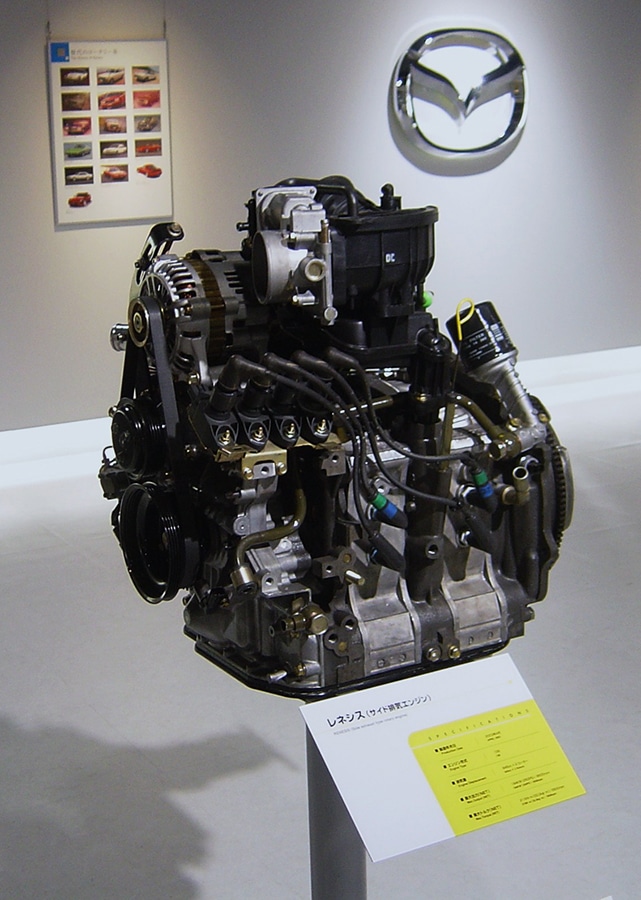The 13B Renesis is one of the many rotary engines that Mazda has created over the course of several decades.
Most car enthusiasts love rotaries simply because they’re different from the standard piston engine, while others love their high-revving nature and smooth powerband.
Whether you are curious about the 13B engine and want to know more before purchasing a standalone engine or rotary-powered car, or if you currently own a 13B-powered car, this guide will take you through what you need to know.
History and Origins of the 13B
In the 60s, many smaller automakers were concerned they would end up defunct or bought and merged with larger manufacturers.
Mazda was one of those smaller automakers. The company planned to stand out in order to make themselves more competitive in the international market, and they did this with the rotary engine.
In 1967, Mazda unveiled their Cosmo Sport — the very first mass produced car with a dual-rotor Wankel engine in the world.
It took some engineering ingenuity for the Cosmo Sport to become a reality, and this set the developmental groundwork for the 13B.
There are several variants of the 13B engine, spanning from the 1970s to its final iteration in the RX-8. Let’s go over each of these iterations below.
13B-AP
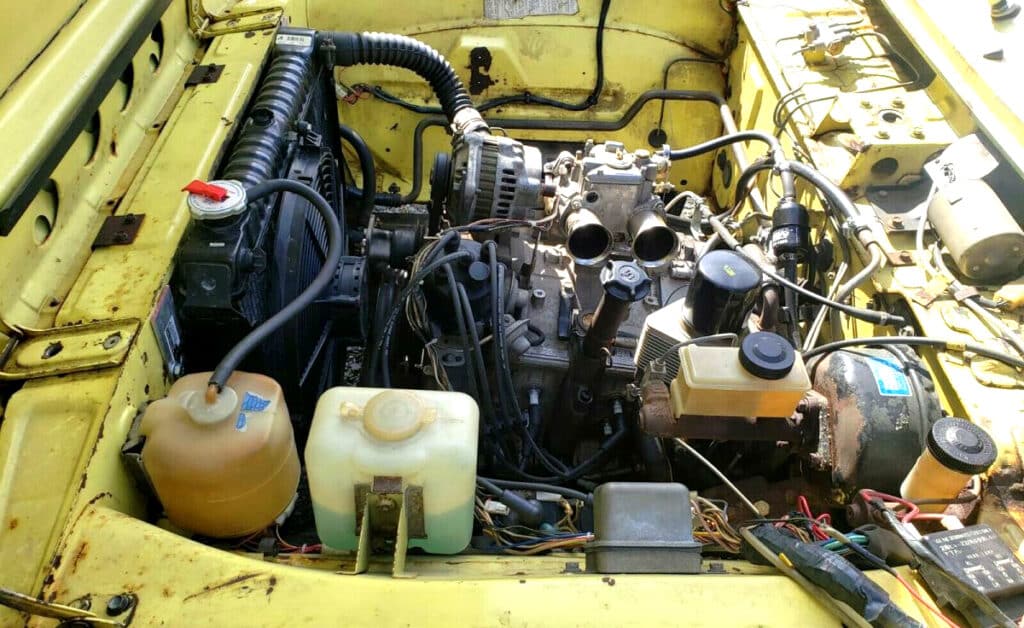
The Clean Air Act was passed in the United States in 1970, and automotive manufacturers had to reduce emissions in order to sell their cars in the US. The 13B AP was designed to meet this requirement, and the AP stands for “Anti Pollution”.
Although designed to meet emissions standards, Mazda also intended the car to be a high performer with an engaging driving experience. It was used in 5 production vehicles, including the only rotary-powered truck: the Repu.

Cars powered by the 13B-AP include:
- Cosmo AP (1975-1980)
- Repu (1974-1977)
- Parkway (1974-1977)
- RX-4 (1973-1978)
- RX-5 (1975-1980)
13B-RESI
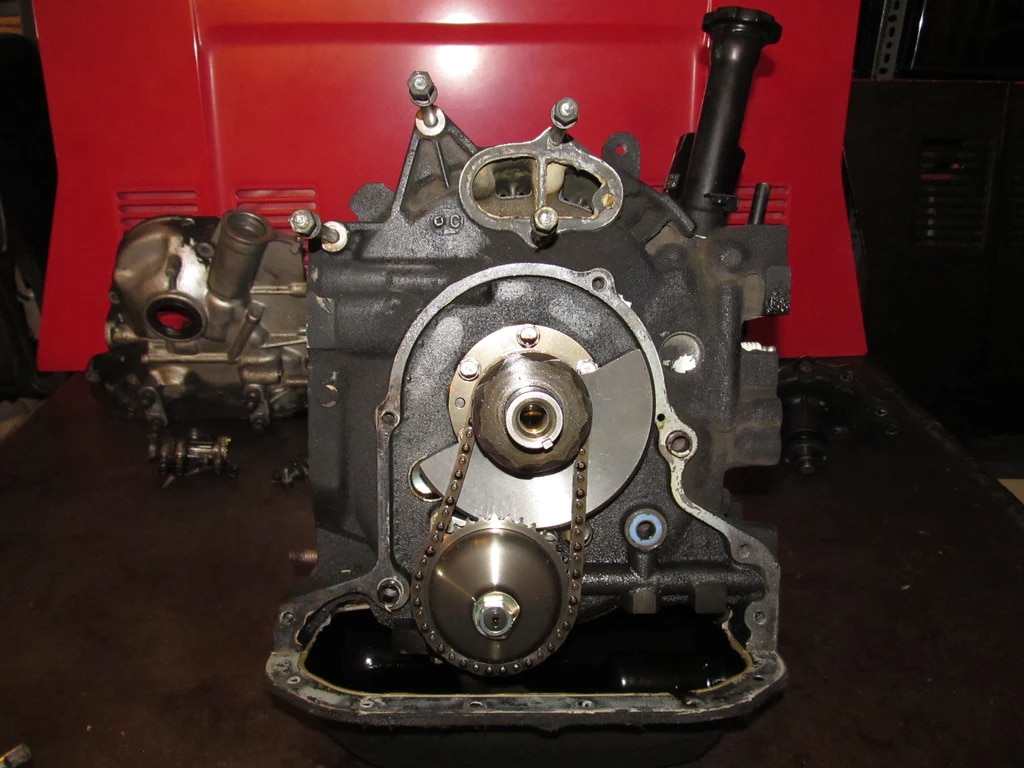
In the 1980s came the 13B-RESI (Rotary Engine Super Injection), boasting more power and better overall performance than the previous 13B-AP.
The most unique aspect of this engine was its intake, called a Dynamic Effect Intake, which worked similarly to a supercharger.
This was also the first 13B to be found in an RX-7, the series 3 FB, produced from 1984-1985. Other cars powered by this engine are:
- HB Luce (1984-1985)
- HB Cosmo (1984-1985)
- FB RX-7 (1984-1985)
13B-DEI

The 13B-DEI was found in the FC RX-7 and used an upgraded fuel injection system to increase gas mileage and overall performance.
It was improved upon again in 1989, modifying the intake, engine management system, and rotors, as well as a higher compression ratio.
The 2nd generation DEI thus produced around 14 more hp than the initial engine, bumping it from 146 to 160 hp.
However, Mazda did not stop there. Next they decided to throw forced induction into the mix. Cars using the 13B-DEI are as follows:
- FC35 S4 RX-7 (1986-1988)
- FC35 S5 RX-7 (1989-1991)
13B-T

The 13B-T is a turbocharged version of the DEI engine, raising the hp on the FC S4 RX-7 to 185 and the S5 RX-7 to 200. This is all the more impressive when you consider the engine was a mere 1.3L.
In fact, it can be argued the engine was under-tuned from the factory. Many enthusiasts were able to unlock more power, even up to 250 hp in some cases.
Interestingly, Mazda opted to return to its traditional intake design for the 13B turbo engine rather than the upgraded intake first seen on the 13B-RESI.
The 13B-T powered cars such as:
- HC Luce Turbo-II (1986-1991)
- FC35 S4 Turbo RX-7 (1986-1988)
- FC35 S5 Turbo RX-7 (1989-1991)
13B-RE

Only one car (Eunos Cosmo) had the 13B-RE, making it the rarest 13B out there. Furthermore, this car was only sold in Japan, making it even harder for enthusiasts to get their hands on the 13B-RE today.
The 13B-RE was sequentially turbocharged, with one larger and one smaller turbocharger installed. Additionally, this engine has the largest side ports of any 13B engine and was good for 230 hp stock.
Vehicles using the 13B-RE:
- Eunos Cosmo (1990-1995)
13B-REW
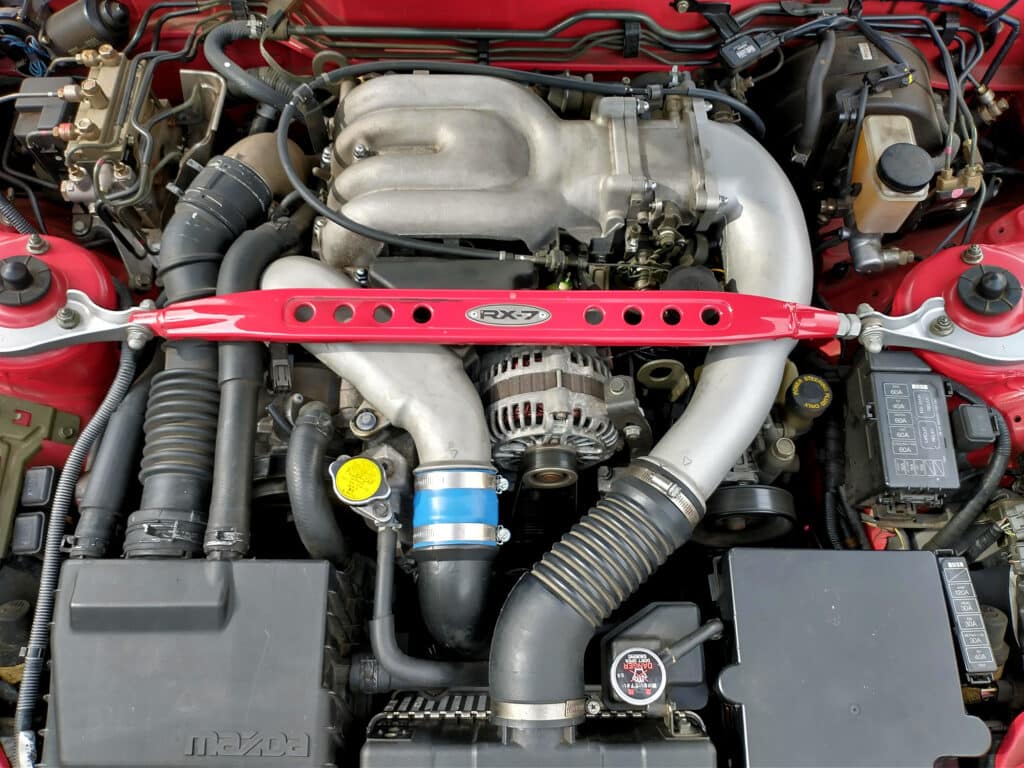
The 13B-REW is without a doubt the most legendary of 13B engines, being housed in the FD RX-7. Initially, the sequential twin-turbo engine put out 255 hp, and this increased to 280 hp over the 10 year lifespan of the engine.
However, the actual max hp might even be higher than 280, and it stands to gain a lot of power from proper tuning and modifications.
Not only was the engine powerful, but it was designed to be more durable than its predecessors. It featured a new engine management system, intake and exhaust systems, along with altered ignition timing for better performance.
Vehicles using the 13B-REW:
- RX-7 (1992-2002)
13B-MSP

Finally, we arrive at the 13B-MSP (Multi-Side Port), or Renesis engine. Mazda went back to its natural aspiration for the revival of the rotary following the end of the RX-7’s production run.
Due to being naturally aspirated and engineered with emphasis on improving fuel economy, the 13B-MSP puts out less power than the 13B-REW that directly preceded it.
The engine was only used in the RX8, and was good for 192 hp to 232 hp, depending on which iteration of the engine was purchased.
This said, it’s still a very capable engine. There are plenty of RX8 turbo kits available for this motor that can safely help the engine to produce 300 whp. Though 450 whp and beyond is possible, far more internal modifications are required for this.
Although the RX8 is the only gasoline car with this engine, it has been tried in a hydrogen powered hybrid Mazda Premacy (although it was produced in very small numbers and does not seem to have had much success) and even a hydrogen powered RX-8 hybrid.
The 13B-MSP is present in the:
- RX-8 (2003-2012)
13B Engine Specs
Manufacturer: Mazda
Production years: 1973-2011
Configuration: Wankel rotary, naturally aspirated or turbocharged
Displacement: 1.3L (1,308cc)
Fuel system: Electronic fuel injection
Cylinder block material: Aluminum
Compression ratio: 8.5:1 – 9.7:1
Power: 135-280 hp
Torque: 130-231 lb-ft
Engine weight: 330-337 lbs
The 13B engine has a long history and a wide range of power outputs while maintaining a low displacement of just 1.3L.
This makes for a very lightweight engine altogether, which is no doubt part of the reason the 13Bs are so often praised and sought after by enthusiasts. So how well does the 13B-MSP in particular fare? Let’s get into it.
Reliability & Common Problems
Rotary lovers already know that the RX-8 and that its 13B-MSP engine is plagued by several issues.
For some, this serves as a dealbreaker that either makes them want to sell the car or not buy one in the first place. For others who love rotaries, these issues are often understood and taken on as a challenge.
Apex Seal Failure

The apex seals in a rotary are essentially an analog to the piston rings in a traditional piston engine.
There are 3 seals, one for each tip, or apex, of the rotor housing. Unfortunately, apex seals are subject to a lot more abuse by design than their piston ring counterparts, explaining why they simply do not last as long.
Common culprits for apex seal failure are high mileage and detonation. As mileage increases, the relatively fragile apex seals get more and more brittle, and they can eventually break. If detonation occurs, it can be enough to blow an apex seal as well.
This is why it is often said that when owning a rotary, the question is not “will I need an engine rebuild?” but “when will I need an engine rebuild?”.
It is expected for the seals to eventually fail, and for those committed to driving rotaries, a necessary evil.
Oil Burning
What probably seems like excessive oil consumption is actually a product of the rotary’s design.
The apex seals need lubrication, and because they are literally located in the combustion chamber, some oil will be burned. So to be technical, this is not a problem or reliability issue insomuch as a consequence of the rotary’s structure.
However, this does mean rotary owners need to be mindful of their oil levels more so than when driving non-rotary engines.
Many choose to pre-mix their gasoline with oil to prolong the life and efficiency of their engines, which will be explained further below.
Engine Flooding
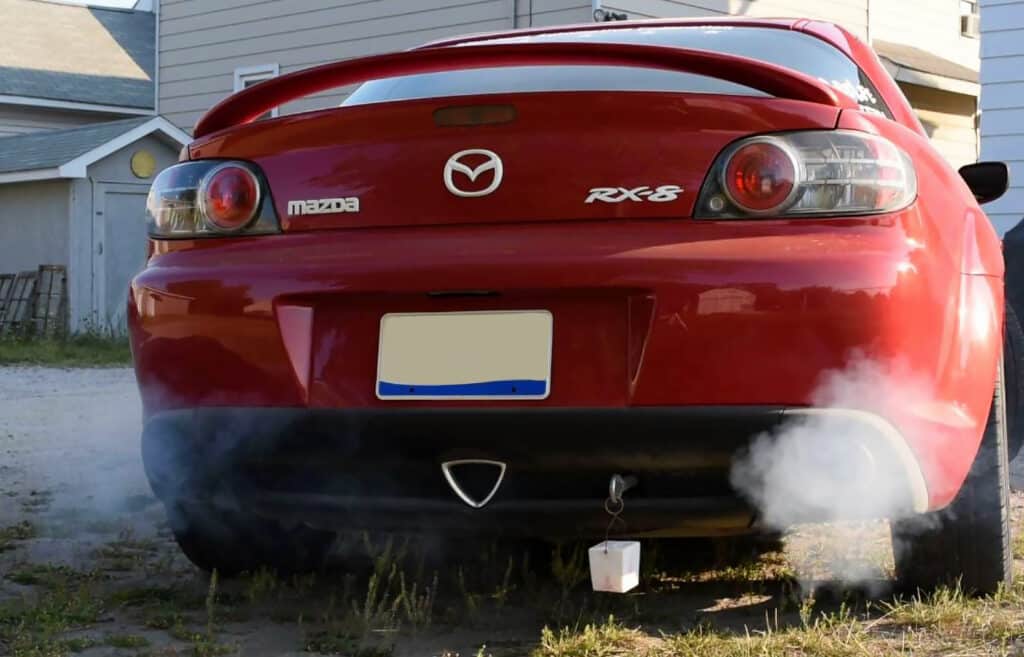
Another problem that is at least partly due to the design of the rotary engine is that of flooding. While piston engines can flood as well, it’s a much more common occurrence in rotaries.
There is a lot of debate amongst enthusiasts as to the precise cause of this, but it seems to be fundamentally due to the engine not fully warming up before being shut off.
For example, a short trip a couple miles down the road and back will definitely increase the risk of engine flooding if the car is not given enough time to properly reach operating temperatures.
This is why many rotary owners will recommend driving the car often, even up to the redline.
Naturally Aspirated Engine Modifications
While forced induction is a route many choose to go, others elect to keep their engine naturally aspirated. Luckily, there are plenty of modifications that can be made to a 13B-MSP engine in its naturally aspirated state to improve performance.
We are going to cover some of the best mods you can do for your 13B Renesis engine. Let’s start with porting.
Porting
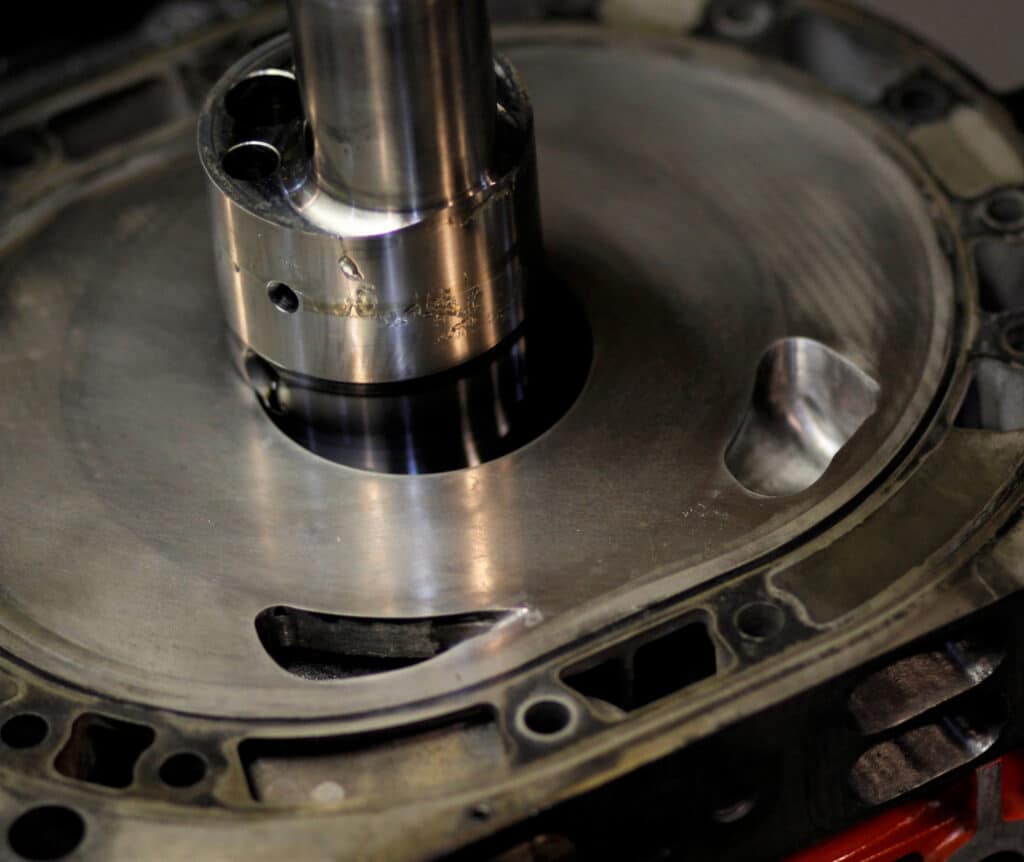
Porting is one of the most popular mods done to the 13B-MSP engine. Stock, the engine has either 4 or 6 ports.
In the North American market, all RX-8 engines had 6 ports with the exception of the 4 speed automatic transmission options from 2004-2005, which had 4 ports.
The goal of porting is to optimize intake and exhaust airflow, thereby increasing power. There is no single way to do this, however.
The main types of porting are street, bridge, and peripheral. Which one you choose to do depends on how you plan to use the car and what is most important to you as a driver.
Street Porting
Street porting is an option that maintains the most daily drivability overall. You can expect around a 15-25 hp gain, which is a decent amount, without suffering from poor idling or horrible response at low RPM.
This type of port could be considered the least invasive because it only involves clean up of the existing ports and minor reshaping.
However, you can also do a more aggressive form of street porting whereby you effectively increase the duration by widening the reshaped ports.
By doing so, you will inevitably hurt low end performance and get a rougher idle than the more mild version of street porting, but you will also get an even greater power gain at the top end.
Bridge Porting

You can drive a bridge ported rotary on the streets, but this is generally considered more of a racing/competition modification. There are multiple ways to do a bridge port, including a monster, half bridge, or J port.
When bridge porting, expect peak power at high RPMs (think 8,000+) with significantly decreased performance at low RPMs, a rough idle, and a completely changed exhaust note. Power gains are usually around 30-40 hp.
The half bridge is a little different in that it is kind of a literal halfway point between a true bridge port and a street port.
It is meant to balance the increased response at higher RPMs with the poorer response at low RPMs, so you do not have such a drastic decrease in low speed drivability.
Peripheral Porting

Peripheral porting is the most extreme type of port you can do to the 13B-MSP, and it is generally reserved for racing purposes. This form of porting should net you around 50-60 hp.
The high RPM response will be drastically increased, even beyond the stock redline. With this, of course, drivability at low speeds will be practically nonexistent.

Engines ported this way typically do not last as long as those street or bridge ported, but this can also be explained by how hard they are generally driven in addition to the porting method itself.
ECU Tune
An ECU tune is a great way to optimize your Renesis engine’s performance and unlock a little extra engine horsepower along the way. You can flash the engine or do a custom tune to really dial things in as well.
Generally, tuning will free up to 10 hp from the stock engine. The gains can be even higher if combined with intake and exhaust modifications.
On their own, though, swapping out intake or exhaust does not generally add much power at all. In other words, if you had to choose between a tune or intake/exhaust, it makes the most sense to go for a tune.
Unless you just want a different exhaust note, the power gains from an exhaust setup are going to heavily rely on the tune.
Lighter Flywheel
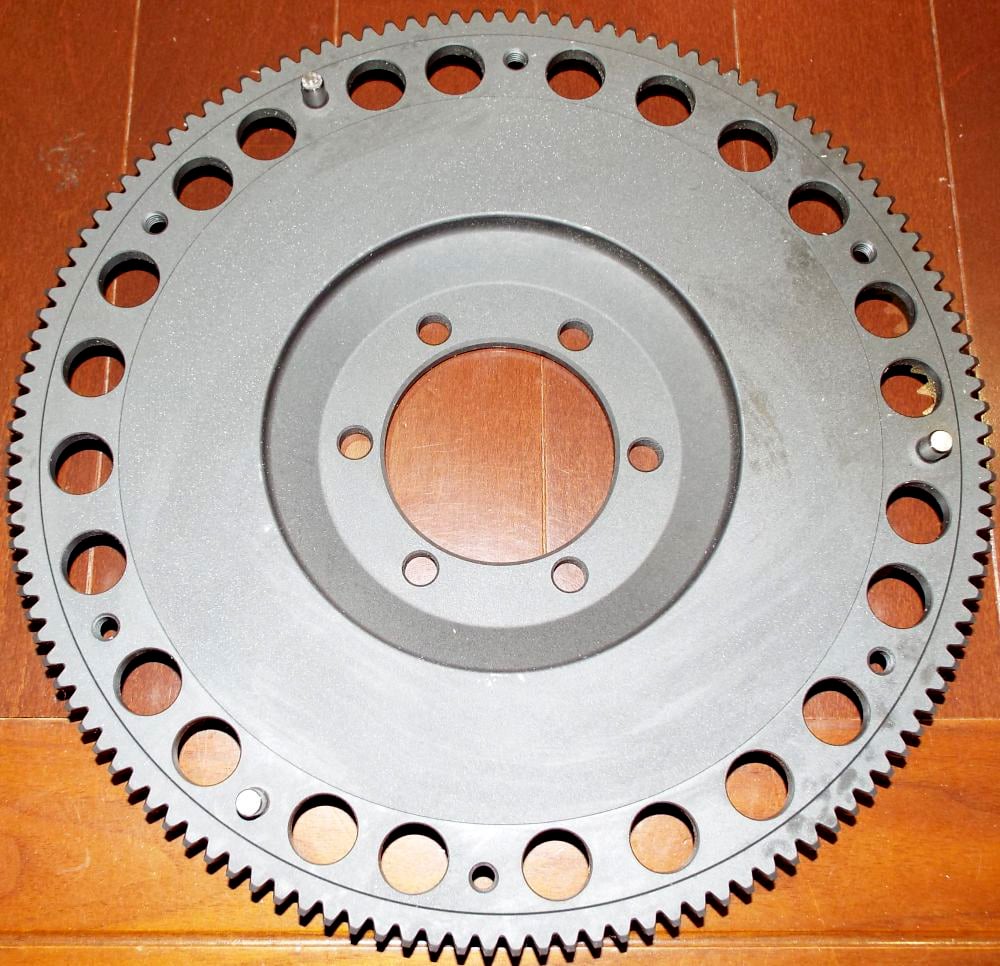
An aftermarket flywheel that is lighter than the one you get from the factory will increase performance as well. Even though this mod will not increase power, you might feel like the engine has more hp simply because it will be more responsive.
Generally, a lighter flywheel will lead to increased throttle response, so drivers can enjoy better and more aggressive acceleration. Be aware that this also means you might have to rev a bit higher to take off from a stop, however.
Aftermarket Clutch

If you are running a ported engine and pushing significantly more power over stock, it makes sense to replace the OEM clutch with a stronger one that’s meant to handle those numbers.
However, if you are running closer to stock power, then it is more of a personal decision to upgrade your clutch.
Some RX-8 owners prefer the combination of a lightweight flywheel with the stock clutch, saying that aftermarket clutches do not feel right with the upgraded flywheel and reduce driving enjoyment as a result.
In other words, upgrade your stock clutch if you are pushing a lot more power, but if you are running at or near stock hp, a new clutch is a matter of preference.
Scatter Shield Blanket

A scatter shield blanket is not so much a performance mod as a protective one. Even without increasing stock power, the 13-MSP is capable of high revs, and high revving engines are at a greater risk of a clutch or flywheel blowing up.
Of course, this should not be an issue during normal driving, but it can be if you regularly run your car hard or track it.
The scatter shield will help prevent bits of metal from flying all over the place and potentially seriously injuring you or others. This is especially important to consider on bridge or peripheral ported engines where they reach very high revs often.
Premix
Premixing is not a mod but an optional preventative maintenance item, really. Doing so can extend the life of the Renesis engine greatly though, so there’s no good reason to avoid it.
Adding premix when refueling can be done for daily driven or racing applications. For the Renesis engine, it is recommended to add around 4 oz premix for every 10 gallons of fuel.
While it is no doubt a hassle to also have to add premix at the pump, increasing the life of the engine will make it well worth it.
Potential Swap Options

Engine swaps are a big task and usually require trial and error amongst enthusiasts. There is no hard and fast rule for doing an engine swap, and the same goes for the 13B series of engines.
With that being said, a lot of interesting and unique swaps have already been done, from Miatas and Corvettes to an actual airplane!
When talking about the 13B-MSP in particular though, the 3rd generation NC Miata (2006-2015) is a really good match.
The NC Miata uses the same front and rear subframe as the RX-8 does, as it’s based on a shortened version of the RX-8 platform.
The 13B-MSP and its manual transmission fit fairly easily. If Miata is always the answer, then is a rotary engine swapped Miata the ultimate answer?
In Conclusion
The 13B is a historic and even legendary engine. The success of the rotary was a big deal and helped Mazda stay afloat as its own company, which we are thankful for as they continue to put out great cars, even if not rotary powered.
Of course, the rotary might not be gone from production forever, as they have been tested with positive results in hydrogen powered applications. Time will tell.
The final version of the 13B was the naturally aspirated 13B-MSP in the Mazda RX-8, which left some enthusiasts unhappy as it marked a reduction in overall power when compared to the outgoing RX-7 with its turbocharged 13B-REW.
Others have come to appreciate the 13B-MSP and build, modify, and track their RX-8s. Any rotary owner needs to be aware of the most common issues, including apex seal failure, engine flooding, and oil burning.
All three of these are a byproduct of how the engines were designed, but there are things that can be done to help combat the damage and wear incurred.
Premixing is a common method to help extend the life of a 13B, and generally owners need to be especially mindful of their oil levels because a rotary naturally burns a fair amount of oil.

The engines also need to be allowed to reach operating temperatures to help prevent flooding, which means they need to be driven with enthusiasm.
Obviously, hitting the redline right after starting the car would be a bad idea, but once it’s warmed up some, it is a good idea to really rev the engine a few times. Not only is it fun, but you are extending the life of your engine. Win-win!
When it comes to modification, porting and ECU tuning are going to be the two options guaranteed to net you the most power gains in a 13B-MSP without adding forced induction.
The stock intake is pretty efficient, and adding a cold air intake without a tune will be unlikely to change performance much at all.
In fact, you would really need a tune, intake, and exhaust with a catalytic converter delete to see benefits from the common intake/exhaust mod path.
ECU tuning is fairly straightforward and can be done with a pre-made or custom tune. Porting can be done several different ways, and the more extreme, the more power gains.
However, there is a tradeoff in that the greater top end gains you get, low end performance suffers.
When porting a street driven Renesis, it is best to stick with the aptly named street port that improves high RPM performance without totally destroying low end drivability.
For racing applications, a bridge or peripheral port is often done, with the peripheral option giving the greatest horsepower gains.
Some owners decide to bridge port their Renesis engine for street driving. This can be done, although it is important to remember that low speed performance is going to be greatly reduced, which will no doubt impact the drivability on public roads.
Finally, although the 13B series was made by Mazda for their vehicles, they have proven successful when swapped into many cars, from other imports to American muscle cars.
This goes to show just how much these engines are loved and sought after, even with all the extra maintenance and rebuilding that comes with owning a rotary powered car.
What’s your favorite rotary engine? Have you considered swapping one into a project car? Let us know by leaving a comment below!
Feature image: Tennen Gas, Wankel Rotors, CC BY-SA 3.0


